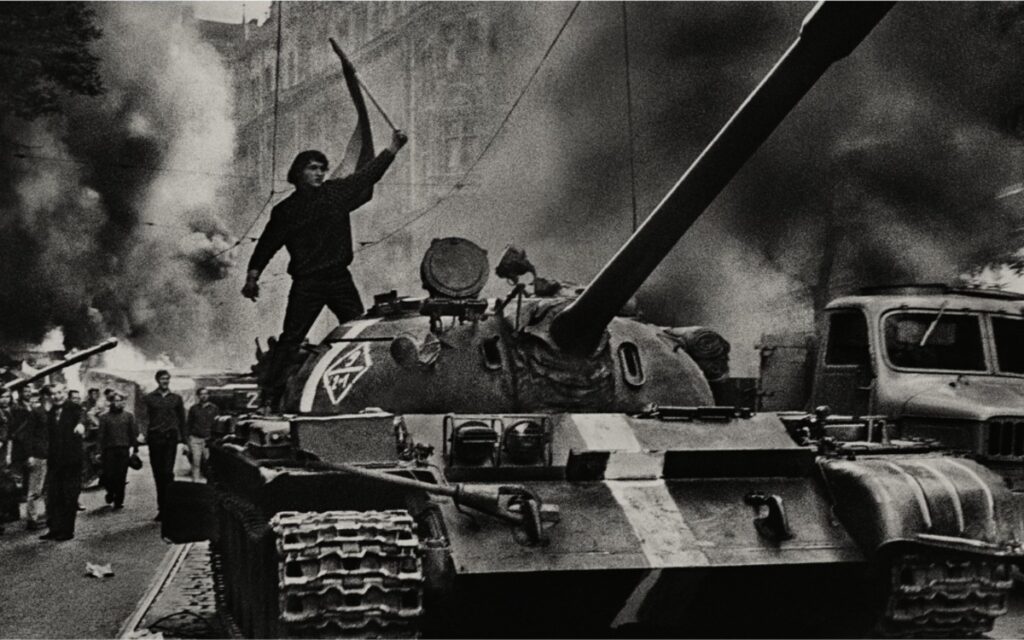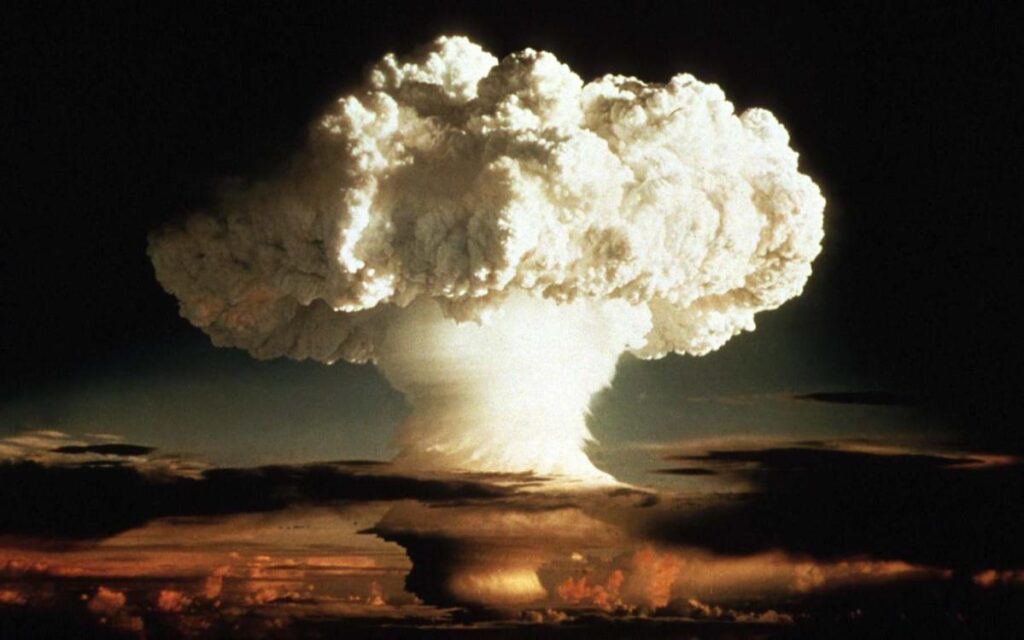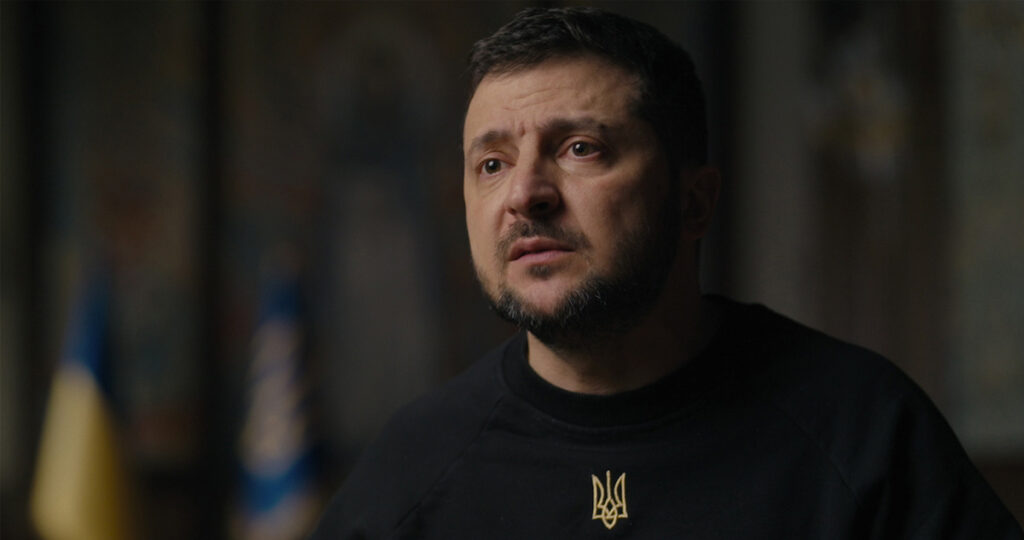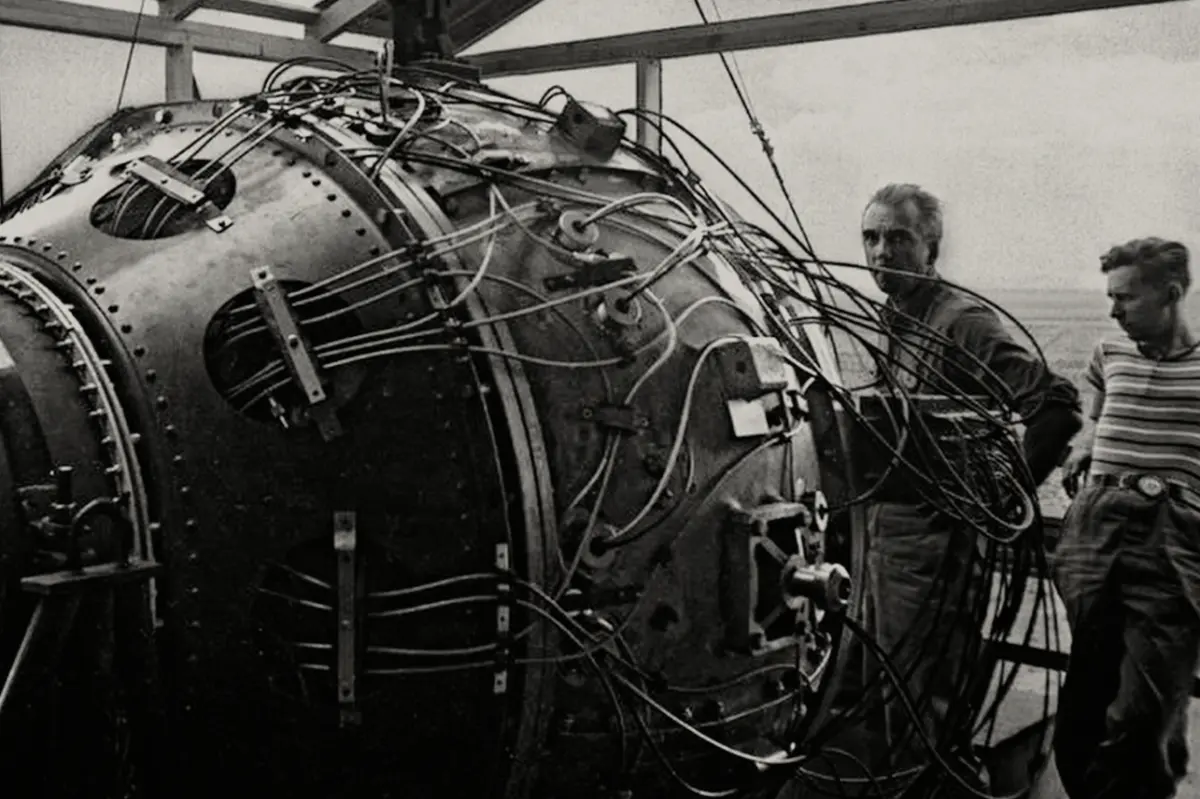Turning Point: The Bomb and the Cold War is a nine-part documentary series released on Netflix on March 13, 2024. It is directed by Brian Knappenberger and produced by Luminant Media. Each episode has a runtime of about 60+ minutes.
This is a comprehensive documentary series that covers the Cold War. It starts with the creation of the atomic bomb, the rapid spread of nuclear weapons, and then follows the history of the Cold War up to the fall of the Soviet Union. The series also covers the rise of Vladimir Putin and the Russian invasion of Ukraine.
The documentary series features Tom Nichols, Garrett Groff, Robert Gates, Volodymyr Zelenskyy, Garry Kasparov, Kaja Kallas, Timothy Naftali, Audra J Wolfe, Stephen Kinzer, Sam Nunn, Lesley MM Blume, Richard Rhodes, Akira Yamada, Serhii Plokhy, J Samuel Walker, Kazuhiko Togo, Howard Kakita, Susan Glasser, Pavel Litvinov, Mikhail Khodorkovsky, Nina Khrushcheva and several others.

Turning Point: The Bomb and the Cold War Review
The documentary offers a detailed and in-depth analysis of the historical events that led to the Cold War. It provides a comprehensive overview of the political, economic, and social factors that contributed to the conflict, including the ideological divide between the capitalist West and the communist Soviet Union, the nuclear arms race, and the proxy wars fought around the world.
Moreover, the documentary explores the impact of the Cold War on different regions of the world, from Europe to Asia and Latin America. It highlights the key moments and turning points of the conflict, such as the Cuban Missile Crisis and the fall of the Berlin Wall, and shows how they shaped the course of history.
Through expert interviews, archival footage, and firsthand accounts, the documentary takes viewers on a journey through the decades, providing a nuanced and insightful perspective on one of the most significant events of the 20th century.

In the documentary, Lesley MM Blume, a renowned author, paints a vivid picture of the state of the world today. She describes it as an “ongoing tide” that is perpetually shaped by the history that came before it. She concludes that the lessons we thought we had learned from the past have not been fully absorbed, and thus we continue to repeat the same mistakes. This can be seen as the battles that have been fought before for freedom, aka Ukraine against Soviet dominance or the fear of nuclear attacks between the Western and Eastern bloc, prevails yet today.
Turning Point: The Bomb and the Cold War stands as an example of how in the hands of a few avaricious and power-seeking individuals, the larger public suffers immensely. Be it the US government wanting to be a superpower or communist expansionism, everything comes at the cost of taking away freedom from its people, on the pretence of their well-being and success. In reality, the beneficiaries are a limited few while the larger public seeks at least some individualistic freedom and the ability to dream without restrictions.
Initially, the US portrayed itself as the bearer of democracy, inciting rebellion against tyrannical powers in various countries. While it could be seen as a good cause, helping people take back the power in their hands. But one consistent mistake seen in all their such missions is that they do not follow through with their plan. They would help the rebels but would leave them on their own accord when they needed reforms and various resources to create a new just system.
With the old system in shambles and trying to rebuild a new society, people often expect a change overnight. When that dream remains far out of reach, people go back to the old ways if some leeway is given to them within the tyrannical system. This is exactly what we see in the case of Russia and how Vladimir Putin came into totalitarian power. The fall of the Soviet power promised a flourished future but when the living standards declined further under new and corrupt power, the past started to look much better. Thus the society leaned or was deceived towards the one that promised the old glory.

Amidst everything, what really gave these despotic the courage to take on others, is nuclear power. The initial episodes might feel like an overview of what was happening around the world, as the events of the movie Oppenheimer were taking place. Also, if you have watched a recent Netflix documentary – Einstein and the Bomb, you would see a few references that changed the course of the world. Discourse on whether the bombing of Hiroshima and Nagasaki was necessary, remains to be an ongoing debate. Some believe that Imperial Japan were about to surrender while some argue that they wouldn’t have without the mass destruction.
One cannot point at any side with certainty but could there be other ways to tackle – a possibility is always there. What’s frightening though is that the same dilemma looms over our heads, at the moment. On one side Russia threatens to set off a nuclear attack if anyone intervenes in their plans and on the other side, the US contemplates if they will need to meddle again. But this time, the destructive nuclear power isn’t in the hands of the two but with a total of nine nations.
The documentary shows how on various occasions, the faulty technological systems (alarming an attack when there was none) brought the nations to the brim of a nuclear war. With the extremely volatile and tense situation around the world, it’s possible that any small mistake could essentially mean the end of a portion of the human population. What started as a cold war, followed by its repercussions that continue to prevail has turned into a hot situation that burst out of hand. Overall, it’s an extensive documentary that tries to explore the history in detail and doesn’t skim through, like many others. If anything, it could be seen as a great lesson, for anyone willing to learn.
Rating: 4.5/5
Turning Point: The Bomb and the Cold War is available for streaming on Netflix.

Leave a Reply